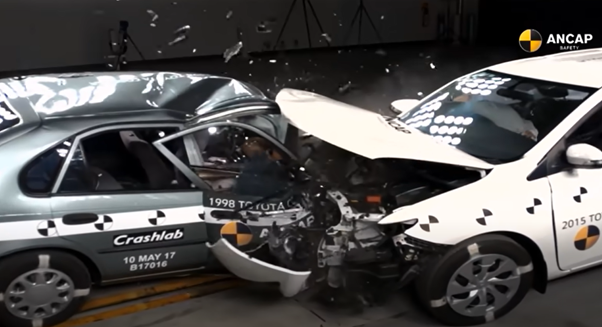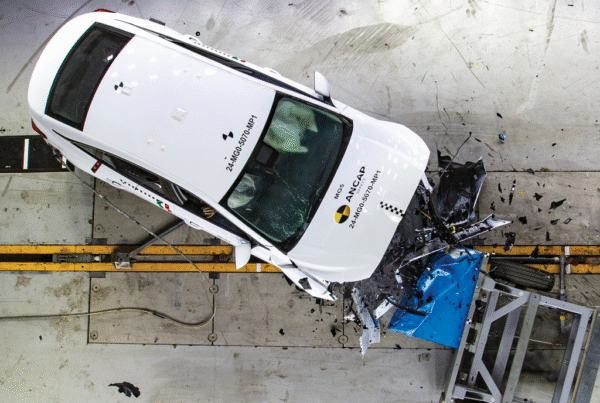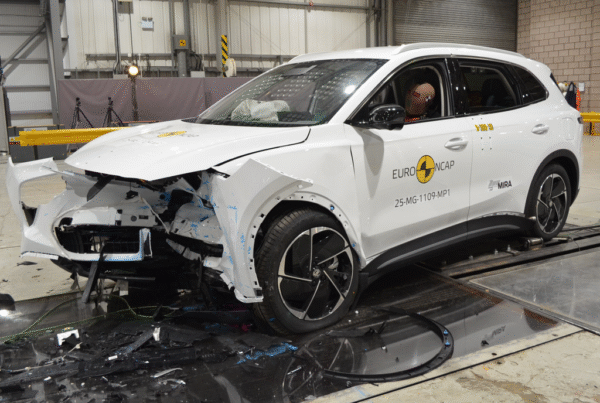The Australian Government Joint Select Committee on Road Safety started its hearings in mid-September. Seventy submissions were made. Two submissions that are particularly interesting are those from the Australian New Car Assessment Program (ANCAP) submitted by ANCAP CEO Carla Hoorweg and the one from ARRB submitted by engineers Tia Gaffney and David McTeirnan.
Most fleet managers will know that ANCAP rate the safety of new vehicles from 0 to 5 stars for new passenger, sports utility vehicles (SUV) and light commercial vehicles (LCV) sold in the Australia and New Zealand. Their rating system is based on a range of destructive physical crash tests, an assessment of on-board safety features and equipment, and performance testing of automated collision avoidance technologies. Interestingly, the composition of the star ratings for Australia according to ANCAP is 5-Star: 92%; 4-Star: 3%; 3-star or less: 1% and unrated: 4%. In other words, a total of 8% of vehicles are 3-star or less.
The ARRB submission cited the Western Australian Royal Automobile Club’s Alex Forrest’s statement that “Testing has shown that in a vehicle-to-vehicle crash, the driver of a 2-star rated vehicle would probably receive severe head and brain injuries or even be killed, but the driver of a 5-star vehicle is more likely to walk away unhurt”. This is consistent with graphic 64 km/h head-on crash tests carried out respectively by: ANCAP between a newer 2015 Toyota Corolla (5-star) and a much older 1998 model (0-star); the US Insurance Institute of Highway Safety between a 2009 Chevrolet Malibu (5-star) and a 1959 Chevrolet Bel Air (not rated but ≈ 0-star); and Global/Euro NCAP’s Ford Fiesta from 1998 (1-star) and one from 2018 (5-star). Viewing these videos on YouTube’s ‘Old Cars vs New Cars Crash Test Compilation – Car Safety Evolution’ reveals sickening vision of the driver crash test dummy in the older vehicle’s being crushed because of lack of occupant crashworthy cabin integrity, i.e. collapsed weak door structural components allowing steering wheel and floor intrusion and failing seat fixtures.
Alarmingly, crash experts know that a vehicle that merely meets the Australian Design Rules (ADRs) would achieve a rating of only 1.3 stars. Harmonisation of standards internationally to allow vehicle importation has forced ADRs to significantly lag behind world’s best practice vehicle safety by a significant amount. This in turn is why, critically for all vehicle occupants who have survived a crash, ANCAP has had a greater effect in raising a vehicle’s safety standard than ADRs. Regrettably, calls to raise (or even introduce) the crashworthiness (e.g. roof crush) and driver safety assist ADR performance levels (e.g. Automatic Electronic Braking AEB) of imported vehicles continues to fall on deaf regulatory ears. This is why fleet purchase managers play a crucial role here, ensuring any new vehicles purchased are 5-star ANCAP rated, and why Australian Federal and State governments need to continue assisting with co-funding ANCAP.
Interestingly, the ARRB submission notes “Research estimates that in Australia there are 19,000 businesses operating fleets with 20 vehicles or more, totalling 2,162,000 vehicles and there are an additional 400,000 businesses running fleets of less than 20 vehicles. In addition to general consumer demand, our commercial fleets will have tremendous influence over the vehicles which will emerge in the new car market and will then trickle into the used car market. It is imperative to empower fleet managers to purchase 5-star cars if we are to be successful in driving the road toll down toward Zero.”
However, ultimately it is the responsibility of Federal and State Governments to do all in their power to rid our roads of 3-star or less vehicles, particularly the 0 and 1-star ones which in fact are no more than ‘coffins on wheels’. Preventing such low star new and used vehicles from being, imported, sold and registered is essential if Australia is to achieve its ambitious target of reaching 50% reduction in deaths and serious injuries by 2030.


















